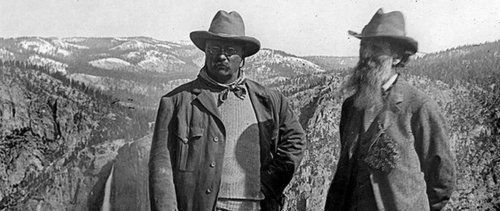John Muir’s critics say world has changed so much since his death that he’s no help to environmental movement
Critics say population growth, urban sprawl, demographic shifts, climate change make John Muir irrelevant
John Muir is the patron saint of environmentalism, an epic figure whose writings of mystical enlightenment attained during lone treks in California’s wilderness glorified individualism, saved Yosemite and helped establish the national park system.
As the first president of the Sierra Club, Muir shaped enduring perceptions about how the wild world should be prioritized, protected and managed.
But now some critics are arguing that the world has changed so much in the century since his death that Muir has gone the way of wheelwrights.
He is no longer relevant.
“Muir’s legacy has to go,” said Jon Christensen, a historian with UCLA’s Institute of Environment and Sustainability. “It’s just not useful anymore.”
Christensen and others see Muir’s beliefs as antiquated in the face of 21st century environmental challenges that the bushy-bearded Scot could not have imagined: population growth, urban sprawl, demographic shifts, climate change.
… To Christensen and others, however, Muir’s notion that immersing people in “universities of the wilderness” — such as Yosemite — sends the message that only awe-inspiring parks are worth saving, at the expense of smaller urban spaces.
Critics also say Muir’s vision of wilderness is rooted in economic privilege and the abundant leisure time of the upper class.
Rather than accessing Muir’s beloved Sierra Mountains as backpackers, skiers or rock climbers, they argue, Californians would benefit more from the creation of urban parks, additional roads and trails in wild lands. …
Lining up behind him will be other critics — including Richard White, a historian at Stanford University who says Muir’s late 19th century, Anglo-Saxon brand of environmentalism and bias toward untouched wilderness skewed the way nature has been portrayed in popular culture. …
Critics also see a correlation between the emotional, biblical language of Muir’s writings and the demographic makeup of national park visitors and the ranks of the largest environmental organizations — mainly aging, white Americans.
The Sierra Club, which Muir founded, and the Audubon Society are struggling to connect with California’s diverse population, particularly Latinos, who polls show are among the most devoted environmentalists in the state. A strong and diverse membership in California, where Latinos are expected to become a majority by 2050, is important to influencing political decisions and raising funds to support missions of conservation and environmental education.
Yet “the conservation movement reflects the legacy of John Muir, and its influence on a certain demographic — older and white — and that’s a problem,” Christensen said.
He is joined in that view by D.J. Waldie, an author and expert on Southern California culture.
“We have to reimagine our relationships with nature to accommodate modern, increasingly diverse communities that see the world differently than white Anglo-Saxon Protestants like Muir did in the late 19th century,” Waldie said.
“For many communities of color, nature of great significance isn’t out there in distant charismatic Sierra peaks; it’s in urban parks, in local mountains and along local rivers — and under their fingertips in the stuff they grow in their own backyards,” he said.
One blemish on Muir’s past is indisputable: He had disdain for California’s Native Americans, a group he claimed had no place in the Sierra landscape.
… Christensen wouldn’t budge. “Muir’s a dead end,” he said. “It’s time to bury his legacy and move on.”

![HC_8[1]](/assets/img/2014/11/HC_81.jpg)